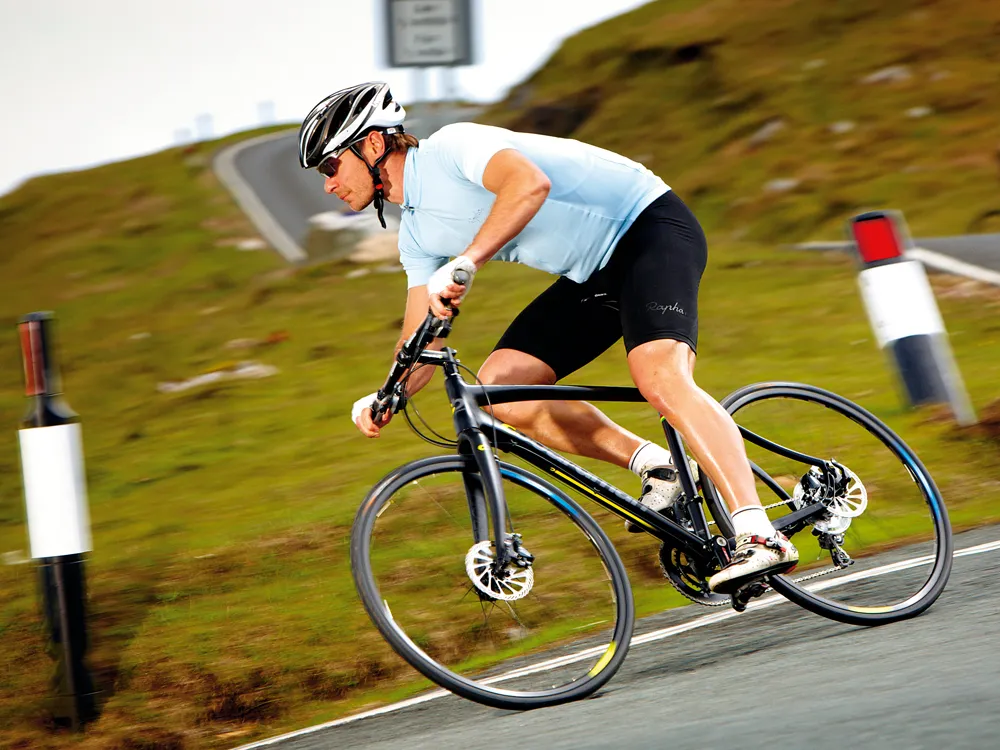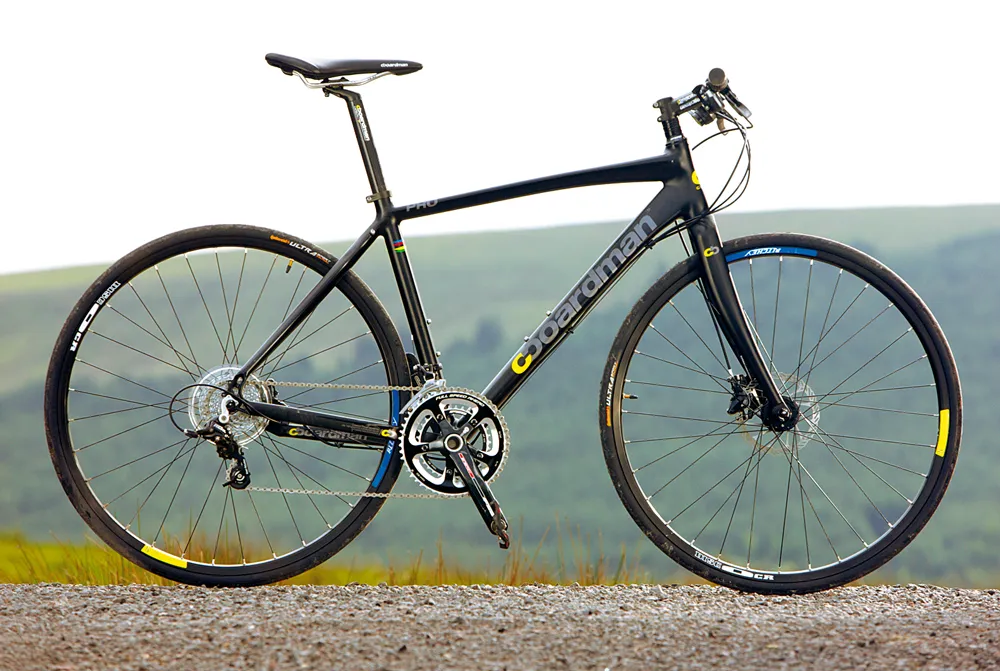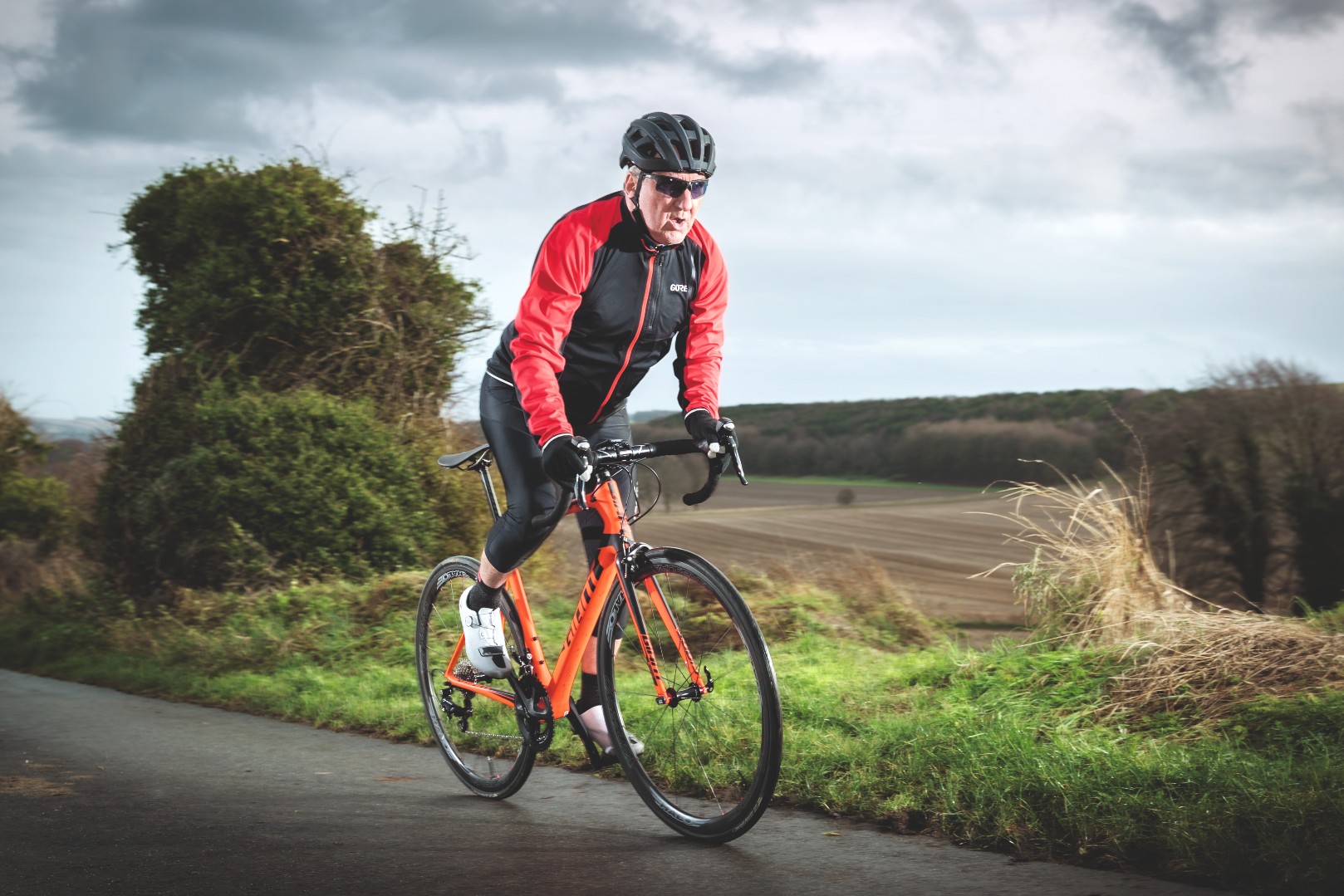Drop bar road bikes are the default choice when it comes to big rides but lightweight flat barred machines aren’t just for the ride to work. If you’re prepared to pay a bit more than a bargain basement price, ignore the ‘hybrid’ moniker and take them for a test ride, today’s flat barred, 700c wheeled road bikes might give you a pleasant surprise.
The Boardman Hybrid Pro is an aluminium British bike with an urban and off-road heritage. It has stealthy, black, laid-back looks, with disc brakes complementing its flat bar look. It costs about £1000, so you can buy it through the Cycle to Work scheme. We found the the Pro stayed comfortable over our 100km sportive route and it’s hard to fault it as a high-end hybrid, mixing comfort, performance and function.
Ride & handling: A good mix of comfort and performance
The Hybrid Pro did the bread-and-butter work well, commuting and riding to the shops. But we wanted to see whether there was more to it – to rescue it from its utilitarian ghetto and set it free on the open road. Sportives are the home of road bikes with drop bars, skinny tyres and calliper brakes. But not everybody wants that setup; some riders prefer the more upright position offered by a flat bar, others may already have a hybrid and fancy doing a sportive on it. The more upright position is comfortable, and if you’ve got issues with your back or flexibility you might not be able to ride with ease on a drop bar.
The main difference between bikes with drop bars and ones with flat bars is the riding position. It’s not just that you’re more upright, on a flat bar your arms will be spread much further apart. This has repercussions. Without bar ends your number of riding positions is limited – not an issue for shorter, more leisurely outings, but if you’re trying to up the ante, increase your speed and go longer distances it can be tiring on your wrists or shoulders. A flat bar also means you’re less aerodynamic. Your bike accounts for 15-25 per cent of drag – you make up the rest, so your wider, higher profile isn’t going to help.
But there are things you can do. We tested the bike with clip-on tribars. These lower your riding position, making you much more aerodynamic. For long, rolling sections of our route they came into their own. They take a little getting used to, so practise riding with them before using them on a sportive. If you’re in a group you’d be safer sticking to the normal flat bar.
As for staying comfortable over long rides, we’d recommend bar ends. These give you an extra hand position or two, depending on their shape, and allow you to vary your position when you climb. They’re available from about a tenner, with clip-on tribars starting at about £30. If you’re going through Cycle to Work, buy these when you purchase the bike.
Frame & equipment: Great build quality, excellent SRAM kit and awesome stopping power
The Boardman Hybrid Pro has a light aluminium frame with great build quality. The finish is excellent - it's so smooth it resembles carbon at first glance. It boasts super-smooth, sanded welds, a BB30 bottom bracket and full carbon fork.
The Boardman has thumb-shift gearing - SRAM’s Doubletap shifters in its flat bar model, which works as well as the drop bar incarnation and offers quick, precise gear transitions. Once you get used to the shifting – it’s a single thumb movement for downshifting, a double tap for upshifting – it quickly becomes second nature and a pleasure to use. It has a good range of practical gears for longer rides over varied terrain, thanks to the combination of a compact chainset and widely spaced, 10-speed 11-28 cassette. The top gear ensured we never span out on our sportive route and the lowest meant even the longest hill we came across – up to King’s Alfred’s Tower in Somerset – could be tackled, albeit out of the saddle on the steepest section.
As for stopping, if you’ve never used hydraulic discs, you’re in for a surprise. The Boardman's Avid Elixirs are impressive. On the hills of our sportive route they stopped us instantly, with bite and control. These brakes offer much greater stopping power than the dual-pivot callipers usually found on road bikes, and require much less effort. Even using a single finger on each brake lever gives you tons of braking power. Control is equally impressive, and you can modulate the brakes to slow down gradually or bring yourself to a dead stop on the spot. Just don’t overdo it: take care and get used to how much power they offer before you grab a handful of front brake on a 40mph descent.
Disc brakes mean disc-specific wheels though. While they don’t offer the road bike performance of conventional hoops and are certainly heavier, they do have advantages. The rims have no braking surfaces, so if they go out of true, stopping isn’t hampered. This hugely improves rim life; great for bikes that might rack up the miles over poorer surfaces.
Ride comfort was aided by large diameter tyres – 28mm Continental Ultra Race. They rolled well and coped with the gravelly surfaces of the Wiltshire woods, inspiring confidence even on fast descents. Going up, they do require more effort than lighter, narrower tyres. The Boardman comes with great SRAM kit – as usual for the company’s bikes – and its own-brand saddle and carbon seatpost keep you comfortable, with the oversize bar and stem doing a great job up front. Its 61cm bar is an ideal width compromise, working well in most situations.


